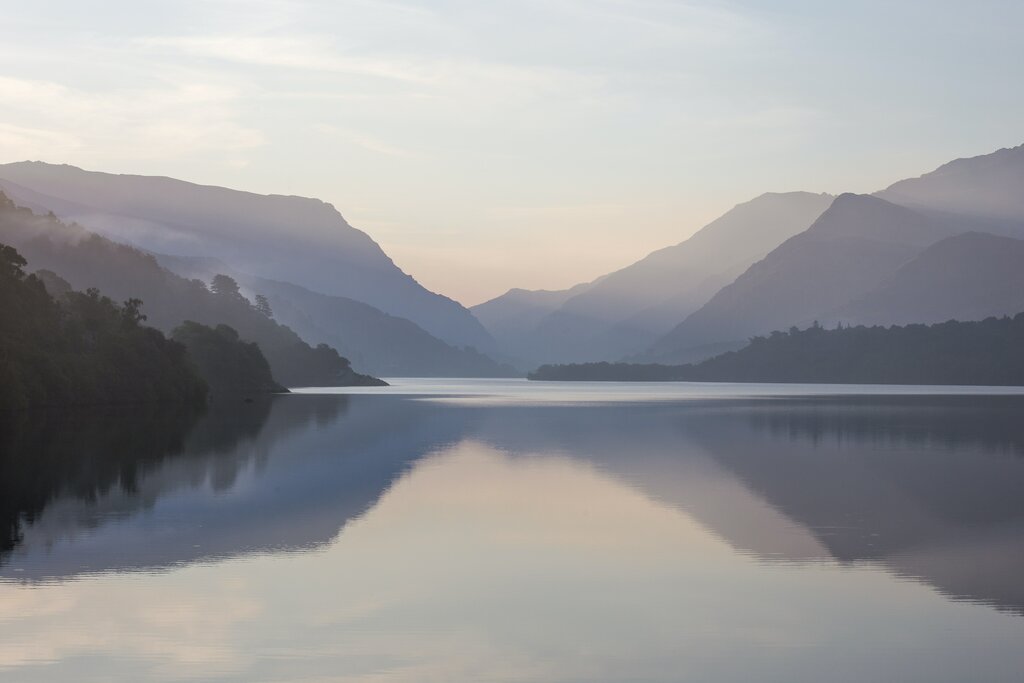Weather
With the shortest day/longest night of the year falling in late December, the days are dark throughout the UK in January—London receives as little as eight hours of daylight, while Edinburgh sees about 7.5 in the middle of the month. Add cold temperature and rain to the mix, and you'll understand why many residents of the UK complain about the weather in January.
However, it isn't as cold in the winter as its northern latitude might suggest, thanks to the Atlantic Gulf Stream that warms the oceans. Average winter temperatures are between 32°F and 44°F (0°C and 7°C), although these vary by one to two degrees from north to south, as do the hours of daylight. London, for example, averages 39°F-48°F (4°C-9°C), while Belfast averages 39°F-45°F (4°C-7°C), and Edinburgh averages 34°F-43°F (1°C-6°C). Snow is uncommon except in the mountains and further north in Scotland, particularly the Cairngorms, although it's possible in southern and central areas in January.
Crowds & Costs
January is the low season for travel throughout the United Kingdom. Major cities like London and Edinburgh have visitors throughout the year; you're unlikely to encounter crowds anywhere in January. Accommodation in popular places will be more readily available than in the peak summer season, although accommodation and opening hours might be limited in some smaller places. Some lesser-known tourist attractions are only open on the weekends in winter, so check opening hours if you have a niche interest you want to satisfy.
Where to Go
Stick to the main towns and cities if traveling to the UK this month. Major galleries, museums, and other open attractions aren't affected by shorter days (don't be surprised if you leave a museum in the mid-afternoon and it's already getting dark outside!). London is an excellent winter destination. You can explore a huge range of attractions by day—the National Gallery, the Tate and Tate Modern, the British Museum, the Tower of London, and much more—and retreat to cozy restaurants and pubs at night.
Scotland's Edinburgh, Wales' Cardiff, and Northern Ireland's Belfast are similarly good options for January travel, as are smaller cities like Bath, York, and Stratford-upon-Avon in England. Visit Edinburgh Castle or Kelvingrove Art Gallery and Museum in Glasgow, or hit up Swansea to delve into Wales’ maritime history at the National Waterfront Museum. Edinburgh and other Scottish cities are especially appealing around New Year (Scottish Hogmanay) and Burns' Night on January 25 (see more below).
Chat with a local specialist who can help organize your trip.
What to Do
If you're not afraid of a bit of cold and snow, the Highlands of Scotland is a delightful place to go stargazing in January. You might even see the incredible Aurora borealis (Northern Lights). While cold, January nights are often clear as well as long, making conditions ideal for both stargazing and aurora chasing. Thaw out with a warming Scotch whisky afterward. And if you're looking for a Welsh adventure, try the Dark Sky Reserves of Snowdonia and the Brecon Beacons for a peek at a clear night sky.
Head indoors to experience the historical and cultural attractions when the weather is foul. Similarly, hop in the car and drive at your own pace to admire picturesque landscapes, ancient buildings, and possible wildlife. In Scotland's Highlands, you may spot bigger animals, like red deer, which are often easier to notice this time of year as there is less foliage. The coast of Wales offers views of big Atlantic waves: stop in Pembrokeshire and Gower on a finer day to enjoy a winter people-less walk. And if in Northern Ireland, drive to see "Game of Thrones" filming locations, like the Dark Hedges near Glenarm Castle.
Events in January
New Year's Day, UK-wide. Welcomed throughout the UK on January 1, there are a couple of places to be on this day. New Year's Day Parade travels through London on January 1. Scotland celebrates Hogmanay on December 31 and January 1, Scots' particular way of farewelling the old year and welcoming the new. And if you’re crazy enough to leap into the freezing sea in Wales, you’ll find fun New Year’s Day dips on Barry Island near Cardiff and in Saundersfoot in Pembrokeshire (come in bathers or fancy dress).
Up Helly Aa, Shetlands, Scotland. One of Scotland's several fire-related January festivals, taking place on the last Tuesday in January, is held on the remote Shetland Islands. Still connected to Viking traditions, you'll encounter many locals dressed as Vikings. The 24-hour festival culminates in a Viking-style ship that gets set ablaze.
Manchester Beer and Cider Festival, Manchester, England. This event in the northern English city showcases beers and ciders from Manchester and beyond.
Hen Galan, Pembrokeshire, Wales. Deep in the heart of rural Pembrokeshire, the Cwm Gwaun valley is quite literally stuck in time. It celebrates New Year on January 13 according to the old Julian calendar. Children go door-to-door singing for calennig (gifts) in the form of sweets or money.
Traveling to the UK in January? Check out these great itineraries
Winter in the Scottish Highlands - 6 Days. Surrounded by frozen lochs and ancient pine forest, you'll settle into a wonderland of scenic treks, wildlife watching, whiskey tasting, and cozy fireside evenings.
Welsh History & Culture - 7 Days. Learn about Tudor history and the complex relationship between Wales and England as you tour the region and its many castles, museums, and monuments.
Cultural & Literary Tour of Bath, the Cotswolds & Oxford - 7 Days. If you're a Shakespeare lover, a Jane Austen enthusiast, or a Harry Potter fan, this week-long tour around England is perfect for you.
More Helpful Information
The United Kingdom in December
The United Kingdom in February
Best Time of Year to Visit the United Kingdom
